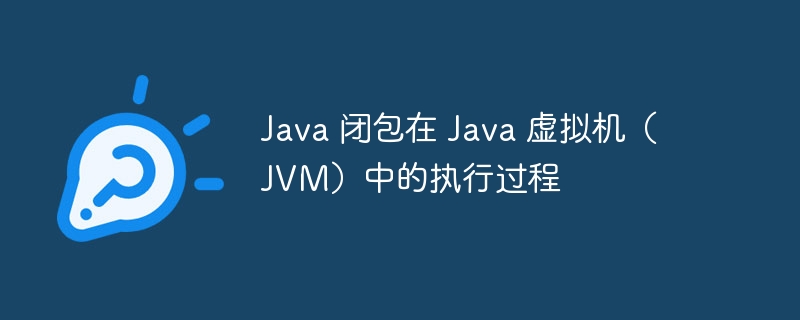
Answer: When a closure in Java is executed in the JVM, the closure object is loaded, the closure object is initialized (making its local variables point to variables in the enclosing scope), and finally the closure code is executed. Load the closure object, initialize the closure object, and execute the closure code

Java closure execution process in the Java virtual machine (JVM)
Closure is an important feature in Java, which allows variables in the outer scope to be used in internal functions. Understanding how closures are executed in the JVM is crucial to mastering Java programming.
How closures are created in the JVM
When a closure is created, it contains a reference to the enclosing scope. This reference is stored inside the closure object as a local variable.
Execution of closure in JVM
When the closure is called, the JVM will perform the following steps:
Practical case
The following code demonstrates the execution process of closure in JVM:
public class ClosureExample {
public static void main(String[] args) {
int x = 10; // 封闭变量
Runnable runnable = () -> System.out.println("x = " + x); // 闭包
runnable.run(); // 执行闭包
}
}In this example:
x is the closed variable in the closure. runnable is a closure that references the x variable. runnable is executed, the JVM will load the closure object and initialize its local variables, pointing to the x variable. x is printed out. Through this example, we can see how closures allow inner functions to access variables in the outer scope, enabling flexible and reusable code.
The above is the detailed content of The execution process of Java closures in the Java Virtual Machine (JVM). For more information, please follow other related articles on the PHP Chinese website!
